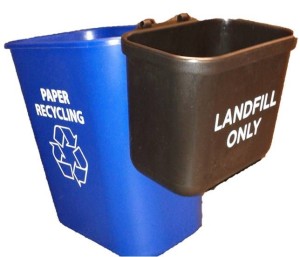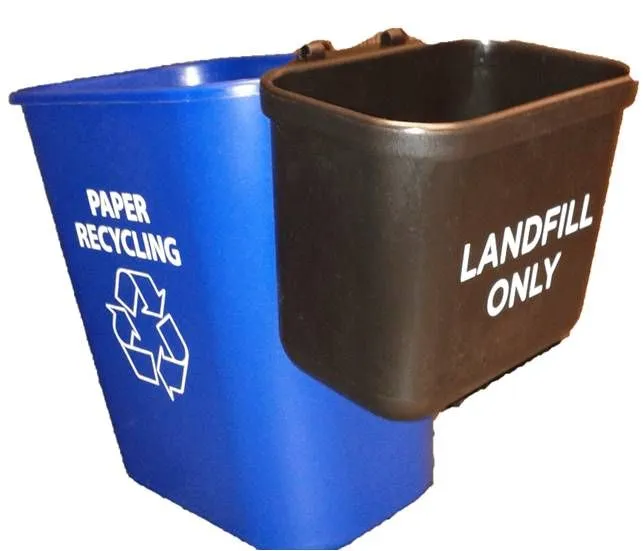Stanford has recently implemented a change in its Deskside Recycling and Mini Trash Bin Program in compliance with California’s goal to 75 percent recycling by 2020, partnering with the Peninsula Sanitary Services Inc. (PSSI), its waste management contractor.
“PSSI and Stanford together began the Deskside Recycling program because we had found that during waste audits, about 17 percent of our landfill waste was paper,” said Moira Hafer from the Office of Sustainability.
Students can participate in this program by taking an online pledge signing up for the Cardinal Green Office Program. In return, participants receive a 14-quart recycling bin and mini trash bin, which will be emptied regularly.
According to an email response compiled by Julie Muir, Michael Rohrs and Kathleen Sumner from Stanford’s Land, Buildings, and Real Estate (LBRE), this program has facilitated recycling by encouraging students and staff to take greater initiative in reducing the amount of recyclable paper in landfills by virtue of convenience.
Since its official implementation in 2014, the Deskside Recycling Program has distributed over 6,000 bins in over 70 buildings. As a response to the efficiency and popularity of this program, Stanford has recently made modifications to increase recyclable collections from once a week to three times a week.
The University hopes that by 2016, the Deskside Recycling and Mini Trash Bin Program will be effective throughout the entire campus.

“Right now, our campus is at a 65 percent diversion rate, which means that 65 percent of the waste that is generated on the campus is being recycled or reused in some way,” Hafer said. “Our diversion rate has improved by a dramatic 15 percent since 2000.”
According to Hafer, students occupy an important niche in reducing waste on campus.
“The best thing students can do is to be aware of what types of material to put in what waste stream,” Hafer said. “Stanford is unique in that we separate all of our recyclable and compost. Raising awareness is a challenge for a lot of students who come from all different places that have all different types of recycling programs, but making sure that knowing what kind of materials go into which bins is the best way to ensure that our recycling rate is going to improve.”
